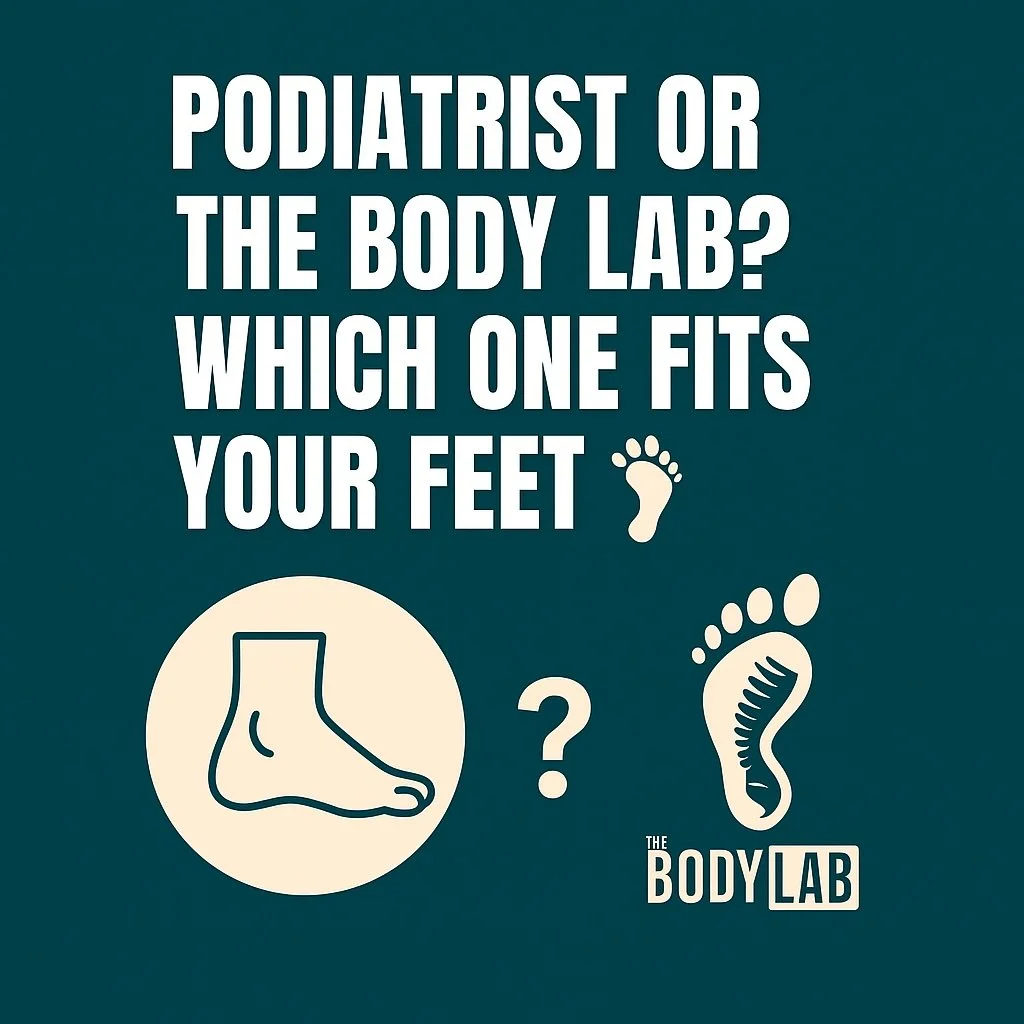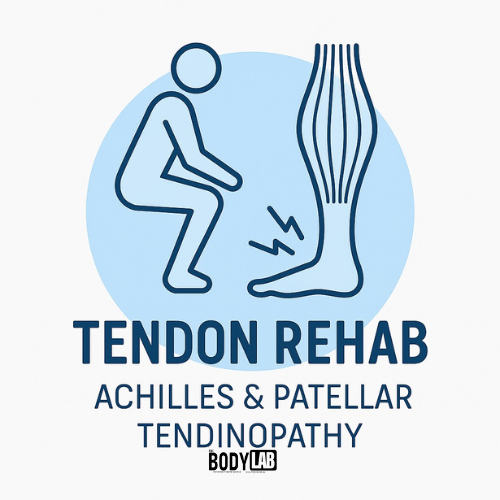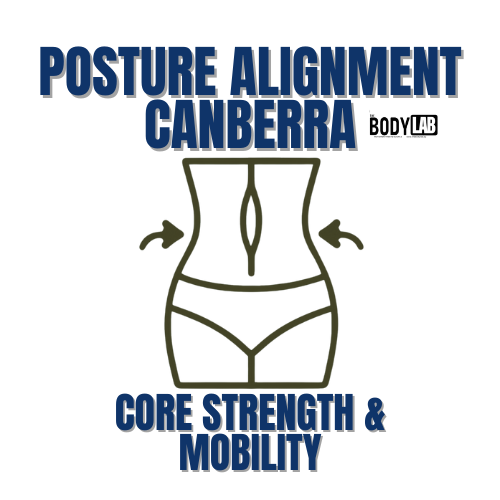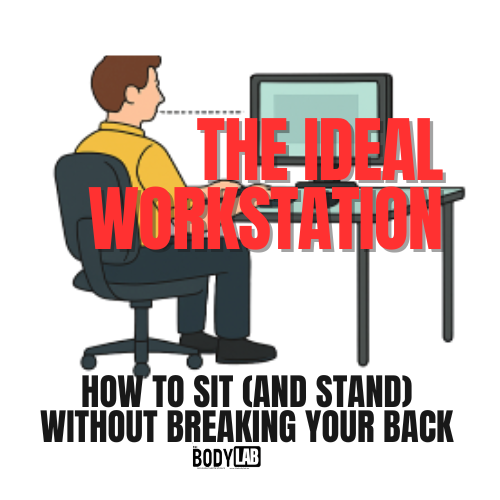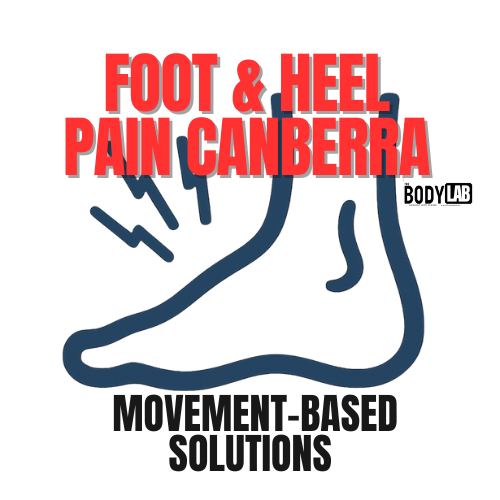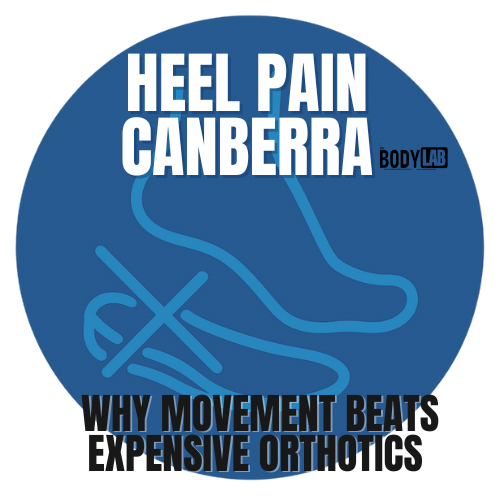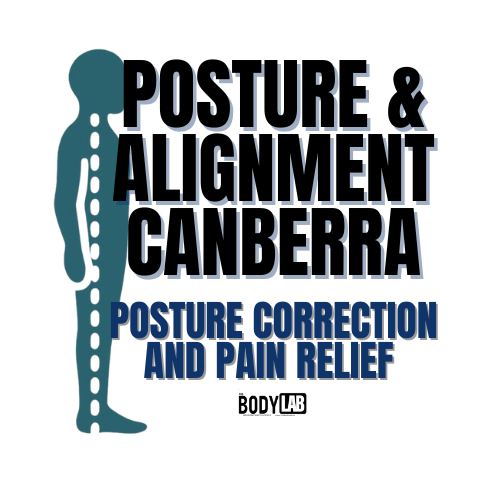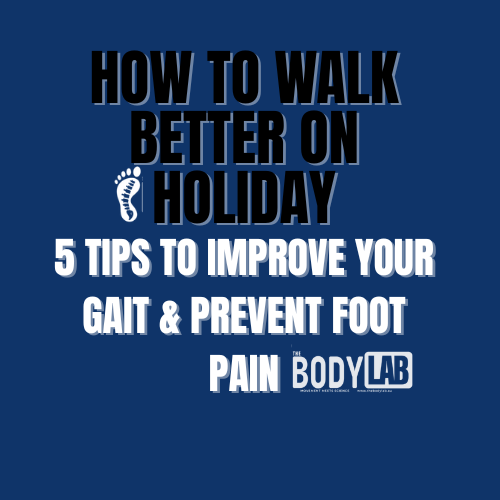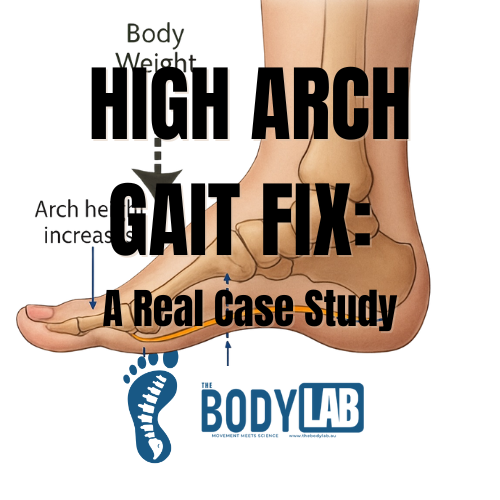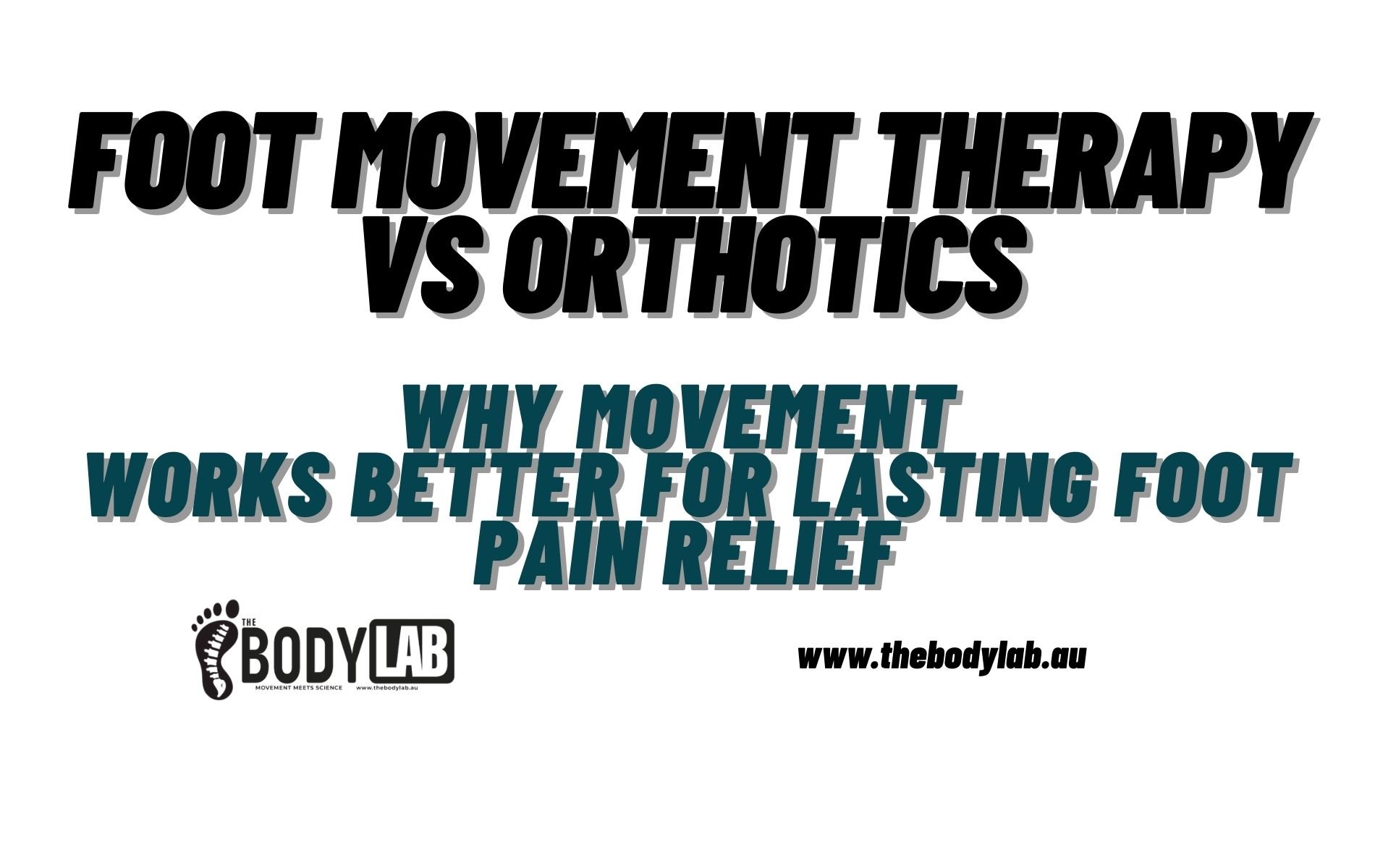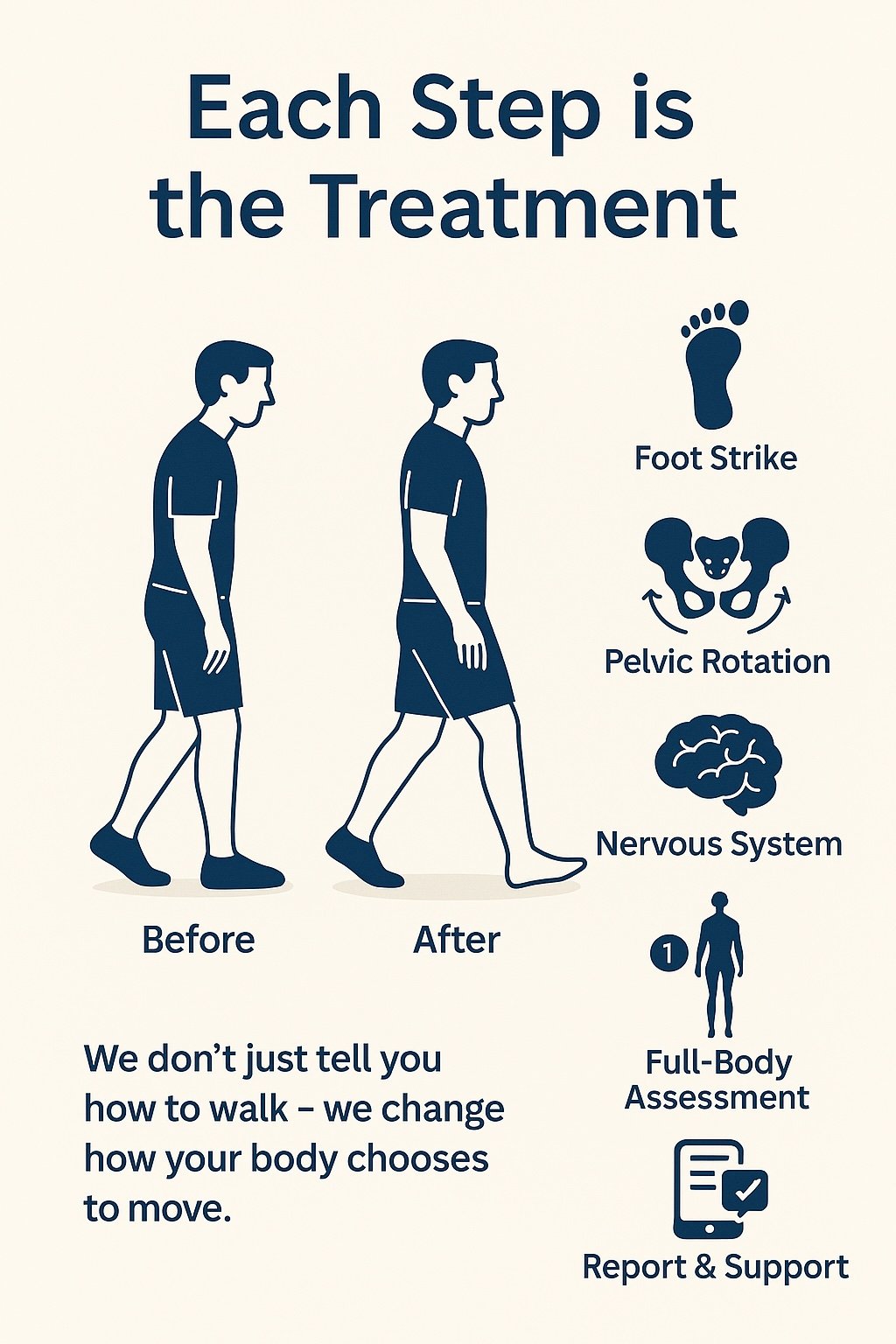Posture Correction in Canberra – Improve Alignment, Movement & Pain
Learn how to fix poor posture with expert movement assessments, corrective exercise programs, and postural therapy in Canberra. Personalised support from The Body Lab.
Introduction: Your Posture Is Speaking—Is Your Body Listening?
Whether you're hunched over a laptop or constantly shifting in your chair, your posture is doing more than just looking a little slouched. It's affecting your energy, your breathing, and probably that annoying ache in your neck.
Postural alignment is the foundation of efficient movement. At The Body Lab in Canberra, we help you decode what your posture is saying—and more importantly, how to fix it.
Why Posture Matters More Than You Think
Posture isn’t just about standing up straight. It’s about how your body holds itself through every movement. Good posture:
Minimises stress on joints and muscles
Improves coordination and efficiency
Supports breathing and circulation
Helps prevent injury and chronic pain
Boosts confidence and mental alertness
What Does Good Posture Actually Look Like?
Here’s a checklist for optimal standing alignment:
Head & Neck: Neutral head position with tongue resting on the roof of the mouth
Spine: Balanced curves in the neck (cervical), mid-back (thoracic), and lower back (lumbar)
Shoulders: Level collarbones, no winging or drooping
Pelvis: Neutral tilt with even hip crests
Legs & Feet: Knees slightly soft, weight balanced across both feet
Need help identifying your posture? Book a postural assessment at The Body Lab and get expert insight.
Common Causes of Poor Posture
Poor posture often results from a mix of habits, compensations, and environmental stressors:
Serious Causes:
Injury, trauma, fractures
General Causes:
Vision issues (e.g., bifocals)
Muscular imbalances
Emotional tension (jaw clenching, shoulder guarding)
Obesity, pregnancy, post-surgical stiffness
Sedentary work setups and prolonged standing
Bad sleep positions
Sports and activities with repetitive patterns (cycling, gaming, lifting)
Common Postural Faults & What They Cause
Forward head → neck pain, tension headaches, poor breathing mechanics
Rounded shoulders → upper back pain, reduced mobility
Excessive lower back curve → disc pressure and chronic lumbar pain
Pelvic misalignment → hip and lower back dysfunction
Uneven weight on feet → knee, hip, or ankle pain
The Cost of Ignoring Your Posture
Unchecked postural issues lead to:
Chronic pain
Joint wear and tear
Poor coordination
Reduced flexibility and movement quality
Increased injury risk (especially repetitive strain injuries)
How I Can Help: Posture Correction at The Body Lab, Canberra
I’m Riccardo Galeotti, a Movement Therapist and Biomechanics Specialist with over 18 years of clinical experience. At The Body Lab, I use functional assessments and hands-on therapy to correct posture at its root cause—not just cover up the symptoms.
What’s Involved:
Postural assessments (standing, sitting, walking)
Muscle strength/flexibility testing
Joint mobility assessments
Ergonomic advice for home/work setups
Personalised corrective exercise programs
Manual therapy to support alignment
Breathwork and relaxation coaching
📍 Located in Canberra? Book your posture assessment today and get a personalised movement plan designed around your lifestyle, body, and goals.
Improve Your Posture with Spinal Mobility Exercises
✅ Improves spinal flexibility
✅ Relieves tension in neck/back
✅ Supports upright posture
Practice daily to restore spinal motion and reset your alignment.
🎥 Watch This Spinal Mobility Video for Practical Exercise to Improve Your Posture:
Why Choose The Body Lab?
🧠 Expertise in Biomechanics & Movement Therapy
🧍♀️ Individualised Programs Based on Real Assessment
🌀 Holistic Approach: Movement + Manual Therapy + Education
We go beyond posture “correction” and empower you to understand and feel better movement in your body.
Book Now: Posture Correction in Canberra
Chronic pain, fatigue, or just feeling off? Your posture might be the missing piece. Book a consultation at The Body Lab and start moving better, standing taller, and living pain-free.
Related Links:
References:
Kritz M, Cronin J. Static posture assessment: a precursor to resistance training. Strength Cond J. 2008;30(5):53–60.
Kuo AD. The relative roles of feedforward and feedback in the control of posture. Adv Exp Med Biol. 2002;508:127–132.
Szeto GPY, Straker LM, O’Sullivan PB. A comparison of symptomatic and asymptomatic office workers performing monotonous keyboard work. Eur J Appl Physiol. 2005;95(2-3):118–126.
Lau KT, et al. Effectiveness of ergonomic interventions in reducing musculoskeletal disorders among office workers: a review. Work. 2014;48(1):105–114.
This exercise will help you:
✅ Improve spinal flexibility and alignment
✅ Reduce tension and stiffness in the back and neck
✅ Enhance posture awareness and movement efficiency
Regular spinal mobility exercises can prevent postural issues, reduce pain, and improve movement quality in everyday activities. If you want personalised guidance, book a consultation at The Body Lab to assess your posture and create a tailored movement program!
Can you really fix years of bad posture? Yes — absolutely. Your body is adaptable at any age, and with the right movement strategy, strengthening, mobility work and expert posture assessment, long-term improvements are not only possible but surprisingly achievable. Learn how to correct rounded shoulders, forward head posture, pelvic tilt and spine stiffness, and why clients across Canberra come to The Body Lab for posture and movement therapy.
Ever wondered what actually happens during a cranial-sacral therapy session? At The Body Lab Canberra, we combine gentle CST with nerve releases and acupuncture — a unique approach you won’t find anywhere else in Canberra. Discover what a session feels like, how it helps headaches, TMJ, anxiety, concussion recovery and that “not quite right” feeling your body hasn’t been able to explain.
Induction rates in Canberra are higher than ever — but that doesn’t mean you’re out of options. This guide explores why births are being induced more often, what it means for your labour, and how acupuncture can naturally support cervical ripening, reduce stress, and help your body prepare for birth on its own timeline.
Tired of shin splints ruining your game? Discover the real causes behind shin pain and how The Body Lab helps footy, soccer, and league players move better and recover faster.
Every step you take depends on a brilliant piece of foot engineering called the Windlass Mechanism. This dynamic system—driven by your plantar fascia and big toe—lets your arch lift, your heel rise, and your body move efficiently. In this deep dive, Riccardo from The Body Lab Canberra explains how it works, what happens when it fails, and how to restore effortless motion through smarter foot mobility exercises and biomechanical insight.
Posture correction in Canberra doesn’t mean endless stretching or nagging to “sit up straight.” The Body Lab offers a biomechanics-based, movement-first approach that treats the root cause of neck and back pain through assessment, manual therapy, and posture retraining.
If bunion pain is limiting your movement, The Body Lab Canberra offers a smarter solution. Instead of relying on orthotics or surgery, Riccardo Galeotti uses biomechanics, gait retraining, and hands-on therapy to help you move freely again — from the ground up.
Podiatrist or The Body Lab Canberra? Learn how Riccardo Galeotti treats foot pain and plantar fasciitis through biomechanics and movement — not just needles or orthotics.
Knee pain isn’t just a knee problem. At The Body Lab Canberra, Riccardo Galeotti uses biomechanics, gait analysis, and tailored movement therapy to restore pain-free motion.
Curious if The Body Lab’s biomechanics workshops are right for you? Whether you’re a health professional looking to deepen your understanding of functional movement, or simply someone who wants to learn how their body really works, these hands-on workshops offer a unique approach to biomechanics — blending science, movement, and practical application from the ground up.
Protein isn’t just about muscle — it’s the chemistry behind movement, mood, and recovery.
At The Body Lab Canberra, we explore how amino acids like tryptophan, tyrosine, and glutamine fuel your brain, support your nervous system, and rebuild your body from the inside out. Learn the science, discover the best food sources, and see how protein underpins everything from stress recovery to smooth, coordinated movement.
Bunions aren’t just bumps. At The Body Lab Canberra, we treat the real cause — poor movement. Learn how exercise therapy and biomechanics can restore your feet naturally.
At The Body Lab, every treatment begins by calming your nervous system — because movement starts with safety. Through gentle nerve releases and neural mobilisation, we help your body shift from tension to flow, restoring fluid motion and connection. Discover how science backs the idea that “motion is lotion for your nerves” and why our Foundational Movement, Advanced Biomechanical, and Movement & Longevity Roadmap sessions all start with one goal: helping your nerves feel safe to move again.
Physio or The Body Lab? Compare Canberra’s movement options. Learn when to see a physiotherapist for acute injuries or Riccardo Galeotti for chronic pain and complex movement issues.
Did you know exercise changes your brain chemistry? A Tasmanian study has found that vigorous activity lowers levels of GFAP, a protein linked to dementia risk. This means that running, swimming, or any activity that gets you puffing could help keep your brain younger for longer.
Tendons love load—but only in the right amount. This guide explains how exercise prescription based on tendon strain can improve Achilles and patellar tendinopathy, with practical exercises, timelines, and tips for older adults in Canberra.
Discover how posture alignment in Canberra can be restored through mobility and core strength. Learn the latest research on diastasis recti, why mobility comes first, and how The Body Lab’s programs help you move better, reduce pain, and build lasting stability.
Ever feel like your desk is plotting against you? Poor workstation setups cause back pain, stiff necks, and endless discomfort. The fix? A few smart tweaks to your chair, desk, and daily habits. This guide breaks down the ideal ergonomic workstation setup—from sitting and standing desk posture to office chair ergonomics and healthy work habits. Plus, discover how our Canberra ergonomic workshops can help you fine-tune your setup and work without the aches.
If your first steps in the morning feel like walking on Lego or your arches ache after a day on your feet, we can help. At The Body Lab, we treat heel pain and foot problems with a movement-first approach that calms irritation, restores strength, and retrains how your feet move. Backed by current research—and taught by us to therapists nationwide—our programs build resilient, pain-free feet without the endless cycle of expensive orthotics.
Heel Pain Canberra: Why Movement Beats Expensive Orthotics
If your first steps in the morning feel like walking on Lego, you’re not alone. At The Body Lab, we treat heel pain with a movement-first approach that calms irritation, restores load tolerance, and keeps you off the endless orthotics treadmill. Backed by the latest research—and taught by us to therapists across Australia—our plan builds resilient feet that move better, not weaker.
Struggling with neck tension, back pain, or feeling like a human question mark? At The Body Lab Canberra, we specialise in posture and alignment. Discover how simple cues and evidence-based movement therapy can reset your stance, improve breathing, reduce pain, and keep you moving with ease.
Going on a walking holiday? Don’t let poor foot mechanics ruin your trip. Discover how to walk smarter (not harder) with these practical tips and a simple 4-week plan to get your feet travel-ready—no orthotics required.
A Sydney-based practitioner shares their experience at Riccardo’s Mastering Foot Mechanics workshop—an engaging, practical, and foot-nerdy day of learning that delivered real results with minimal reps.
Foot pain, poor balance, or stiff hips? It could be your arches. In this case study, we dive into Debbie’s journey from rigid feet and painful walking to feeling grounded and mobile—without relying on orthotics.
The Windlass Mechanism isn’t just a fancy term—it’s the foot’s built-in suspension system. This deep-dive explores the plantar fascia’s role during walking, how toe extension lifts the arch, and why failure of this mechanism leads to pain and dysfunction. We unpack passive, reverse, and active windlass mechanics and arm therapists with assessment and rehab strategies that work from the ground up—literally.
Swallowing isn’t just about food—it’s a full-body event. From the tongue and hyoid to ribcage and jaw, this blog explores how assessing your swallow can uncover muscular tension, postural compensation, and even help explain neck pain or restricted breathing. Perfect for manual therapists, movement pros, and curious humans alike, it’s time to stop ignoring your swallow and start assessing it.
Feeling stuffed up, foggy, or forever congested? This step-by-step sinus self-clearing guide gives you safe, science-backed techniques to reduce pressure, improve nasal breathing, and stop feeling like your head’s full of bricks. Includes pre-clearing tips with peppermint oil or Vicks, manual techniques for sinus release, and tips for long-term results—all from The Body Lab in Canberra.
Still relying on orthotics to “fix” your feet? Discover why Foot Mobilisation Therapy (FMT) is the smarter, longer-lasting alternative. We’ve laid it all out in a one-page printable you can stick on your clinic wall or hand out to clients. Because joints > generic inserts.
Marc came in strong — but bent. Years of lifting had left him with shoulder pain, postural imbalances, and the nagging sense that his body just wasn’t cooperating anymore. Cue our Advanced Biomechanical Assessment.
We didn’t just treat symptoms — we reprogrammed how his body moves. From gait analysis to pressure plate scans and full-body joint assessment, we uncovered the missing links. The result? Marc didn’t need more stretching or cueing… he needed each step to become the treatment.
Read how we rebuilt his movement from the ground up — and why it worked.








